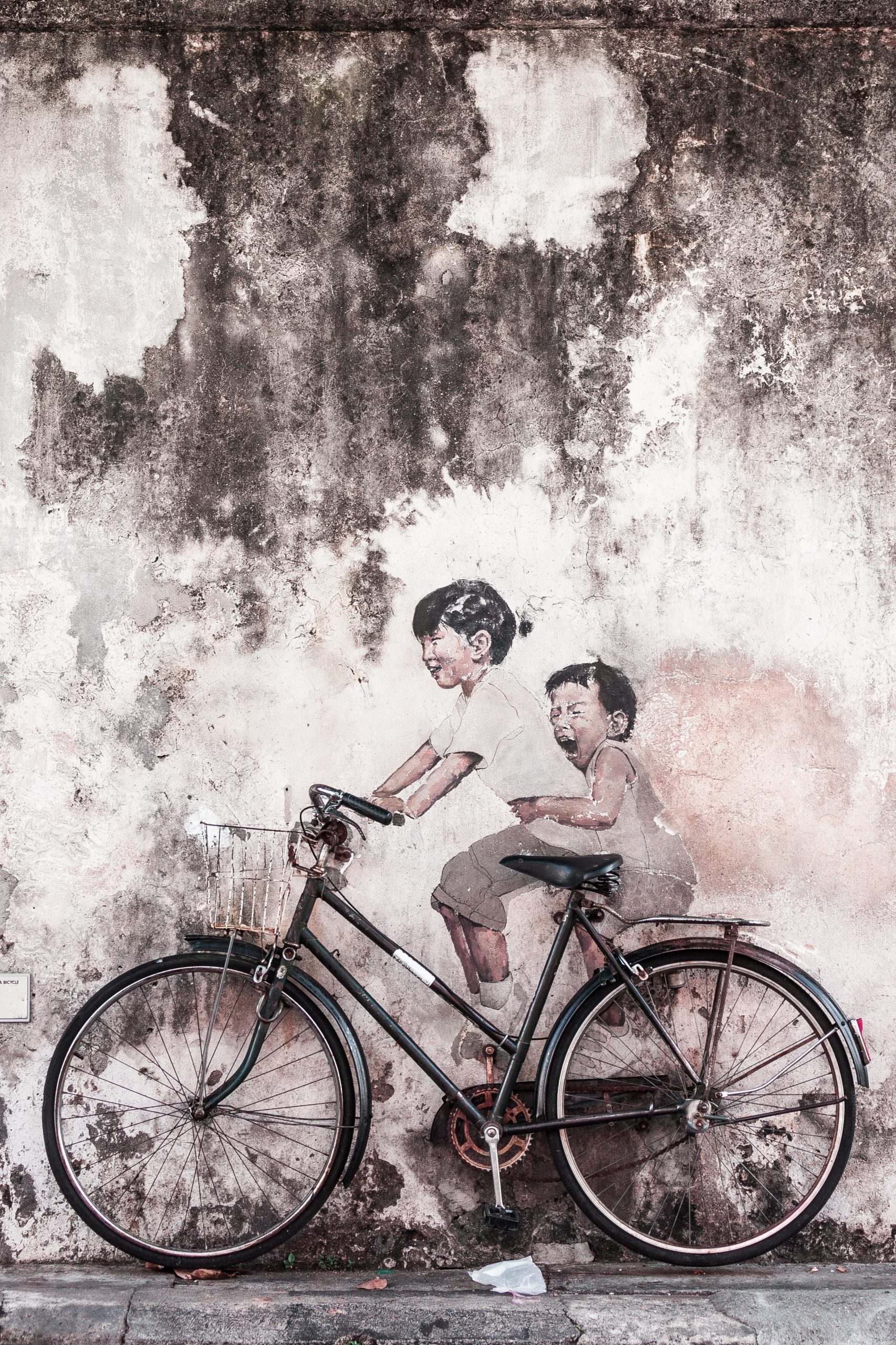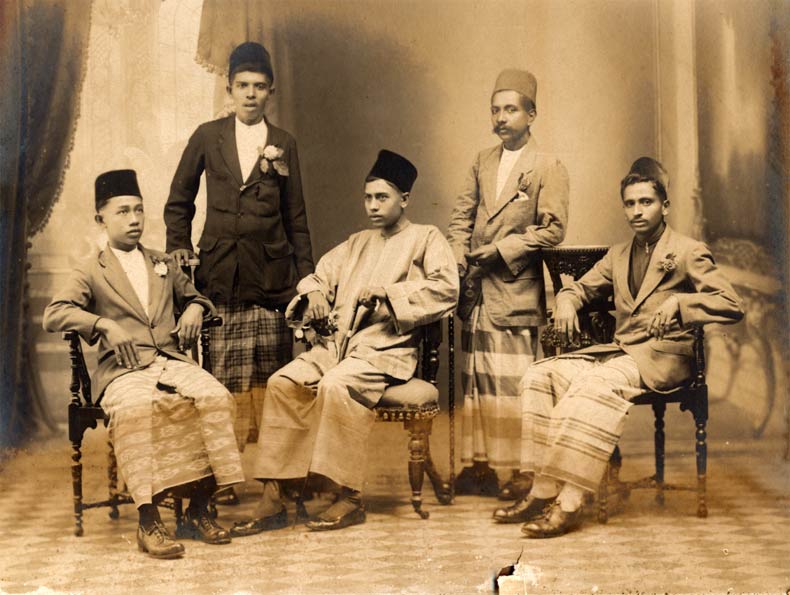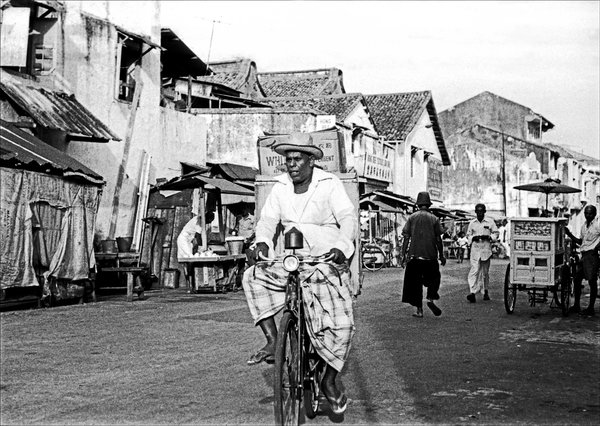
Indian Muslims in Penang: Role and contributions
Published on April 8, 2015 | by penangstory.net.my
The exact year of the first arrival of Indian Muslims in Penang or elsewhere in the Malayan Peninsular is not known. But there is enough information for us to assume that they were here in Penang as early as 18th century, earlier than the British. Historians say that before 1786 Indian Muslims were doing business in Kuala Kedah, and by 1794 there were 1000 Indian Muslim merchants in George Town.

In Malaysia, Tamils form a very big majority of the community referred to as Indians. Likewise, Tamil Muslims are the major group of the people referred to as Indian Muslims here. These Tamil Muslims are generally known in two groups: the Marikars and the Rawthers. These terms carry interesting explanations.
It is said that the word Marikar took shape from the original Tamil word Marakalayer which means the people of wooden boats. This is supported by the fact that these Marikars, even today, are found mostly in the coastal areas of Tamilnadu and therefore their connec tion with the wooden boats is justified. The word Rawther is said to have come from the word Mauther which means people in charge of elephants’ and horses’ divisions of the king’s army. With or without connection to these terms, another variation found.in these groups is that the Marikars follow the Shafi Order of Islamic Shariah, while the Rawthers adhere to the Hanafi Order of the Shariah.
Another interesting fact to be mentioned here is that the family name Merican found in the Modern Malay Community actually refers to Marikar, and similarly the name Rautin refers to Rawther.
It would be also useful to know of another form of identification that exists among Indian Muslims, particularly in Penang. This refers to their place of origin in Tamilnadu. Thenkasi is a heavily muslim populated area in the Trinelveli district of Tamilnadu and Kadaya Nallur is a big town there. Almost all the Muslims who came here from this area seem to have settled in the islands of Penang and Singapore but, not in the Peninsular.
They mostly came with their families and did not scatter around but lived together closely as a community. They identified themselves generally as Thenkasi Muslims and occasionally as Kadaya Nallur Muslims.
The other group of Muslims were from different districts of Tamilnadu, mostly from Ramnad and Tanjore. They formed the typical Indian Muslim business community in Penang and were referred to as Petai Muslims by the Thenkasi Muslims.
Other than these Tamil Muslims, the term Indian Muslim also includes smaller groups sucn as the Kerala Muslims, Bengali Muslims, Gujerati Muslims, and others from the various states of India.
The Kerala Muslims came from another South Indian State called Kerala. They are also known as Malabar Muslims sometimes referred by the people as ‘Kaka’ which means elder brother, in contrary to the malay word kaka meaning elder sister. These Malabar Mus lims seem to have lived in Penang in considerable number. The Kampong Malabar around Transfer Road, and the Masjid Malabar in Beach Street, built by them but destroyed in the bombing during the 2nd World War, are evidences of their presence in Penang.
The Bengali Muslims came from the State of Bengal in India at a time when the countries Pakistan and Bangala Desh were not born, and therefore have to be included as Indian Muslims. The Masjid Bengali in Leith Street and the Kampong Bengali in Butterworth are evidences of their contributions in Penang.
The Gujerati Muslims are from the North Indian state of Gujerat, and another group of Muslims colloquially referred to as Bombay Muslims are from another North Indian state called Maharashtra. These groups of Muslims are small in number and are mainly businessmen. There could be a small number Muslims from other North Indian states too.
There is an important point to be stressed here. The terms, Marikars and Rawthers, Thenkasi and Petai Muslims or the other words and phrases used to refer to the various groups of Indian Muslims are merely terms of identification based on their place of origin. They do not indicate any superiority, inferiority or any order of importance in anyway.
BUSINESS AND JOBS

Thenkasi Muslims form a big portion of the Indian Muslim community in Penang. From the beginning they were hard-working people with little interest in business. Few of them supplied hand manufactured tobacco-products like cigars, beedi and snuff-powder. Some had stalls selling beef, fish or groceries, and other small-scale businesses. Others turned to labour in the wharfs of Penang shipyard and in the Government departments like PWD, Water-Works, Town Council and so on; while the women supplied ground spices.
But today most of them, both men and women, are found in better jobs in Government and private sectors. They are also engaged in a variety of businesses. Many of them are highly educated and are found in all types of reputable professions and top-level govern ment positions. One to mention here would be Tansri Ali Abu Hassan, the former Governor of our Bank Negara.
The other group of Muslims were basically businessmen. There was a top sector of them some of whom indulged in shipping business: as shipping agents; ship chandlers; suppliers of boats, forklifts, and materials needed for loading and unloading. They also supplied labourers for cargo-handling. Many were importers, agents and suppliers of cereals, groceries, and other consumer products. Their imports and trading also included textiles, paper and stationery. There were jewellers not only selling gold and silver ornaments but also diamonds and gemstones. There were also money changers, dealers of old coins and used-stamps. They also had restaurants, bakeries and cold storage houses. They were practically involved in all types of business.
These businessmen needed staffs of all levels: managers, accounts clerks, shop assistants, cooks, labourers and so on. They recruited and brought their relatives, neighbors, and folks of their home-villages from Tamilnadu to fill these staff requirements. These people who came to work for them, together with the employers, formed a strong and successful business community. Business flourished especially until the Penang Island was a free-port.
The Muslim Merchant Society formed in 1912 is an evidence of the past ‘golden business era’ of this community. This Merchant Society still continues to be a registered body in control of a small group of Indian Muslims and owns a valuable piece of land in Transfar Road.
Today, very few among the younger generation of this business group, are still in business. Many of them who had obtained higher education have become professionals. A great number of them have turned to white-collar jobs of all levels in government and private sectors. Many old business organizations, once very successful, were left with nobody to take over. Therefore lot of them shrunk, many closed down, and some were sold to the emerging businessmen of other local communities.
Nevertheless, few of the old business organizations have developed to be bigger concerns. Some have even bloomed up to be international business organizations to presentday corporate level. A very small number of the sons or grand sons of these ‘once great businessmen’ have grown-up to be big manufacturers. One such organization to mention here would be the Barkath Group of Companies which was first established in 1945
There is one more important fact not to be missed at this point. There are quiet a number of, offshoots of this community, who are now flourishing ‘big-level’ businessmen, but unable to represent this community as they have assimilated into the larger, Malay Muslim Community.
Having understood the origin and the social structure of this community and its interests and endeavors for earning, We may now look at the other activities it was involved.
RELIGION

First of all, Indian Muslims in this country have rightfully earned the pride for their role in bringing Islam to the Nation, and the Penang Indian Muslims, certainly, are entitled for their share of this pride. In fact the Penang Indian Muslims have made many additional contributions, in the field of Religion i.e. Islam. The beautiful pre-independence Mosque in the nation, the Masjid Kapitan Keling was built by a Committee headed by Kapitan Kader Mohideen in 1802. Probably this is the mosque with biggest Wakaf property in the Nation and this Wakaf Property indeed was provided by Indian Muslims. Masjid Kapitan Keling was the State Mosque of Penang until the present State Mosque was built in 1980. This mosque, currently under reconstruction, is still managed by a committee of Indian Muslims under the supervision of the State Islamic Religious Department.
Other than this, The Alimsa Walai Mosque in Chulia Street, with the Wakaf Property, was built by Indian Muslims in 1811. The burial ground of the founder of this mosque Imam Shaikh Abdul Kadir, is still maintained within the Mosque building.
The Nagoor Derga built in …….. and the Anjuman Himayathul Islam built in 1930 both Chulia Street, Masjid Bengali in Leith Street built in 1803, the Rawanna Mosque in Perak Road, Masjid Maqbul in Jelutong, Masjid Jalan Perangin, Masjid Abdul Wahab in Macalister Road, Masjid Shaik Dawood in Kampong Melayu, Masjid Shaik Yusof in Doby Ghaut, the Dato Koya derga in Transfar Road and the Indian Muslim mosque in Butterworth were all built by Penang Indian Muslims. Perhaps there are many other such mosques not identified because they have been abandoned or destroyed like the Masjid Malabar in Beach Street.
SOCIAL SERVICES
After religion, The Indian Muslims seem to have given the next importance to social services. Perhaps this is because, giving and helping those in need, is a basic religious obligation to Muslims.
The Penang Muslim League, was one of the eary Indian Muslim Organizations in Penang with may of the other Indian Muslim Associations in Penang as its affiliates. Muslim League is well known for its social services which includes educational scholarships; aids to orphanages and victims of natural disasters; helping the handicapped; Raya gifts for the needy, sports activities and many other community services in general. It has its own building where it offers a regular free medical service open to all. It represents the community in the State Islamic Religious Department and the Board of Zakat Allocations.
Another old and big association having its own building with a very large hall at Jalan Transfar is the United Muslim Association formed in 1929. Anjuman Himayathul Islam formed in 1930, Persatuan Hidayathul Islam formed in 1941, Persatuan Nurul Islam formed in 1946, Kadayanallur Muslim Association formed in 1946, and the IMAN Society formed in 1991 are other Indian Muslim Associatons with own buildings. There are more than 15 Social Organizations in Penang including Central Muslim Society, Iqbal Islamic Association, Muslim Youth Sports Club, and the Butterworth Indian Muslim Association. All these associations have been involved in similar social service activities.
SPORTS
Apart from social services, all the Indian Muslim Associations in Penang also had sports activities. Their youths played various games like Sepak Takaro, Badminton and Foot Ball. They had Teams representing the associations and had inter-association matches. But there was also a separate organization mainly for sports. This was the Muslim Recreation Club briefly referred to as MRC, formed in 1942. The other local communities too had Recreation Clubs at this time: CRC for the Chinese and IRC for the Indians in general. The MRC teams played inter club matches with CRC and IRC. They also took part in State level matches and tournaments.
POLITICS
The Penang Muslim League which is a Social Organization now, was actually one of the early political parties in Malaysia. It was formed around 1954 and played an active role in politics until 1974 when it was reformed to be a social body. It was an affiliate of UMNO and a Member of the Penang Alliance. It fielded Haji S.M. Idris and Thyub Khan for the City Council Elections and Honorable A.M. Abu Bakar for the Settlement Elections under the Alliance tickets and attained a 100% victory. It has always played an important role in deciding the victory of candidates in its constituency. It is an interesting fact that the Penang Muslim league voted for the admission of MIC into the Alliance. The Muslim League Leaders have been regularly honored with awards by the government since its early years, even during the British rule. The highest of such awards during British rule was the OBE award which carried the ‘Honorable’ title, awarded to A.M. Abu Bakar, the first president of the Muslim League.
LANGUAGE AND LITERATURE
The Indian Muslims, specifically in this context the Tamil Muslims, loved and respected their Language and Literature. The Thenkasi Muslims who had come with their families wanted their children to learn their mother tongue. Therefore they started their own Tamil Schools as early as nineteen thirties. The Anjuman Tamil School was started in 1932, the United Muslim Tamil School in 1934 and .the Thenkasi Muslim Tamil School in 1950. They maintained the schools and paid the teachers by themselves. These schools have now been either taken over by the Government or closed.
Among Indian Muslims were many writers, poets, speakers and scholars of literature well known throughout the nation. Indian Muslims played a key role in forming the North Malaya Tamil Writers Association based in Penang in 1960. In fact the first president of this Association was K.K.D. Mohamed Ibrahim while Nakambadi Karim a famous poet was the first secretary. Both were Indian Muslims. J.M. Hussain the next President was a famous writer, author and literary man. Mr. Othuman Gani with the title Chitiramozhi Pulavar, was a famous speaker who trained a lot of youths in debating and public speaking. A. E. Mohamed Ibrahim, a well known tamil short story writer was also an Indian Muslim from Penang.
PUBLICATION OF NEWS PAPERS AND BOOKS
Another important field in which the Indian Muslims were the pioneers is the publication of news papers. Hammed Kalanjiam a well known tamil journalist then was editor for many news papers. Among others were Ahamed also known as Sarana Baskaran and Fakir Mohamed. In fact the editor and publisher of the first Tamil News paper circulated in Malaya and Singapore was an Indian Muslim. It may be very surprising to know that the first news paper in Jawi too was published by an Indian Muslim. Some of the newspapers and magazines published from Penang by Indian Muslims are Malaya Mitiran in 1932, Desa Nesan in 1933, and Malaya in 1957. There were also authors of books among Indian Muslims. The first of the authors known was Mohamed Sultan Marikar who published two books, one in 1890 and the other in 1900, followed by S.P.S. Kader Sahib in 1898 and Abdul Aziz in 1936.
INDIVIDUAL CONTRIBUTIONS
Like the other local communities, the Indian Muslim community in Penang did have many outstanding individuals whose contributions benefited not only their community but all the people in the State as well as the nation on the whole. Honorable A.M. Bakar in public service, J.M. Hussain in Literature, A.S. Mydin in Sports are few of the many Indian Muslim individuals who were well known throughout the nation for their services. Even today, the remarkable contributions of Outstanding Indian Muslims like Tansri Ali Abu Hassan as a top level Economic Expert in the Government, and Haji S.M. ldris who is respected for his service as the President of Penang Consumer Association, still continue.
CONCLUSION
This is only a quick glance at the community’s two-century story. Nevertheless, it could possibly be enough to provide a basic understanding of the origin, social structure, talents, endeavors and achievements of the community as well as its role and contributions in the past.
Today, 45 years after independence, the Indian Muslims still maintain a notable place among other communities in Penang. But, have they kept up with the process of progress around them?
Whatever the answer is, establishing it with supporting facts may need some research and study. But there is one major factor which is very obvious in today’s Indian Muslim community.
This community was at its best in most ways, when it unanimously and proudly identified itself as Indian Muslims. But, responding to the economic and political developments in the country after the independence, it has pushed itself into an identification crisis.
An analyst, Hanapi Dollah, in his Malay article “Politik dan Budaya India Muslim di Pulau Pinang: Satu Persoalan Teoritis Ethnisiti” expresses this in blunt words. He says: “Perkelompokan dan identiti orang India Muslim berubah daripada India Muslim kepada India apabila mereka menyertai MIC clan menjadi India Muslim semula apabila mereka menubuhkan KIMMA clan akhirnya berubah lagi menjadi Melayu apabila mereka menyertai UMNO”
“….. . identity of Indian Muslims changes from Indian Muslim to Indian when they join MIC and becomes Indian Muslim again when they form KIMMA and finally changes further to Malay when they join UMNO”
This dilemma of identity has hindered their unity, diversified their talents and efforts, and weakened whatever political strength they would have. Perhaps a Saviour might emerge in time!
Whatever it is, the Indian Muslim community by nature is a hard working and law abiding community with a lot of talents, and there is no doubt that their constructive role and contributions to the state and nation will continue forever.








